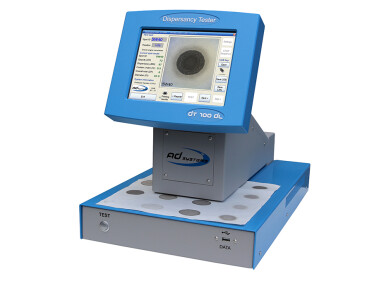Oil analysis
Application Brief - Analysis of Wear Metals and Additive Package Elements in New and Used Oil Using the Optima 8300 ICP-OES with Flat Plate Plasma Technology
Jan 12 2012
The analysis of new and used oil for wear metals and for formulation or depletion of additive package metals has been around for over 30 years. Wear metals such as copper (Cu) and iron (Fe) may indicate wear in an engine or any oil-wetted compartment. Boron (B), silicon (Si) or sodium (Na) may indicate contamination from dirt or antifreeze leading to a failure. Additive elements such as calcium (Ca), phosphorus (P) and zinc (Zn) are analysed for depletion which contributes to wear since these elements contribute to certain key lubri¬cation characteristics.
The new Optima™ 8300 ICP with Flat Plate™ plasma technology from PerkinElmer (USA) is the inorganic instrument of choice for wear metal applications. This brief discusses: the Optima 8300 stability and efficacy, reduced operational costs, and decreased analysis time per sample when compared to previous systems for the analysis of wear metals and additive elements.
Data were collected for this application using the PerkinElmer® Optima 8300 ICP-OES with a CETAC® ASX-1400 stirring autosampler (CETAC Technologies®, Omaha, NE). The 8300 Flat Plate plasma technology utilises two flat induction plates to produce a plasma that is compact, dense and robust.
Better stability - Stability is increased for a longer period of time, requiring less recalibration and improving QC. The vacuum pump rapidly fills the sample loop, while the ICP-OES peristaltic pump simultaneously transports carrier solution, keeping the plasma stable. With the stability of the Optima 8300 system, the check standards rarely failed in an 8-10 hour period (see the full application note for details).
Reduced analysis time per sample – The analysis time per sample can be as short as 20 seconds (2 replicates per sample) without any degradation in the analysis precision or long-term stability. The analysis time can also be greatly reduced by adding a sampling valve to the ICP such as the CETAC® ASXpress™. A standard analysis system relies upon a single peristaltic pump to both deliver samples to the nebuliser and rinse the sample flow path between sample deliveries. The ASXpress™ system utilises a high-speed vacuum pump in addition to the ICP-OES peristaltic pump. The 6-port valve allows the use of both pumps simultaneously, reducing total sample analysis time significantly.
Reduced argon use - The new Optima™ Flat Plate plasma technology utilises two flat induction plates producing a plasma that is compact, dense and robust. This plasma utilises about half the argon required by previous helical coil designs while still delivering excep¬tional analytical performance. Plasma argon flow has been reduced to 10 L/min versus the typical 15-18 L/min used by helical systems for this application which helps to reduce the cost of operations.
Conclusion
The PerkinElmer Optima 8300 ICP-OES handles the diluted oil matrix very easily and increases sample throughput over previous Optima models to 45 seconds per sample with little carryover between samples. The Optima 8300 is the ideal ICP spectrophotometer for oil laboratories with moderate workloads. For laboratories with a heavy workload, an Optima 8300 combined with a CETAC® APS-1650 Automated Prep Station or a JANUS Oil Workstation and CETAC® ASXpress™ rapid sample introduction system is suggested.
Digital Edition
PIN 26.1 Feb/Mar 2025
March 2025
Analytical Instrumentation - Elemental Analysis for Quality and Process Control at Refineries, for Lubricants and Wear Metals in Engine Oils - Synthetic Lubricants: New Developments - Scaling...
View all digital editions
Events
Mar 17 2025 Houston, TX, USA
Mar 18 2025 Beijing, China
Mar 19 2025 Manila, Philippines
Mar 20 2025 Brussels, Belgium
Mar 20 2025 Guangzhou, China

.jpg)




.jpg)



.jpg)








